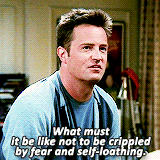Kurt Cobain’s ability to touch the lives of vastly different people made him the voice of his generation- even after his death. The obsession over understanding Cobain and his suicide has only grown stronger, which begs the question why? Why do we still continue to talk about him? Because of the endless fascination surrounding Cobain and his story, his life has been documented and re-documented over the last 20 years. "Montage of Heck," a documentary released this past August, chronicles the life of Cobain yet again, but with a different approach.
"Montage of Heck" begins with a young Cobain singing and playing guitar around his childhood living room. These home videos are presented in a dark, silencing way, as opposed to the typical reminiscent feeling you would expect from home videos. The home videos help to humanize Cobain and bring him from an elusive space to a more concrete one. The documentary then moves on to his first experiences with drugs in high school, leading into his eventual addiction. Unlike other documentaries that discuss this point of his life through published facts, Montage of Heck discusses his initial drug experiences through uncovered personal voice recordings made by Cobain. In these voice recordings, recorded by Cobain without the intention of ever releasing them, viewers learn about Cobain’s first adolescent sexual and drug-related experiences. His personal voice recordings are played during the first part of the film, which in many ways allowed Cobain to narrate his own film.
About midway through, the voice narrations by Cobain come to an end and are replaced by a ton of home videos taken while he was married to Courtney Love. Without the documentary explicitly saying it, the films show the extreme deterioration of Cobain’s mental and physical health during his time with her. The loss of his actual voice narrating the film shows a similar deterioration of Cobain—like he is starting to fade away. His struggle with fame, and feeling misunderstood by those who worship him, leaves him wanting to end his career and his life. The film ends before Cobain’s suicide, and there is no mention of his death aside from his previous attempted suicide in London. In a lot of ways the decision to cut out the most controversial topic surrounding Cobain’s life was a smart one. To leave out his death helps keep the vision and life of Cobain alive after the film ends.
So why make a documentary that leaves out one of the most controversial suicides, and instead works to humanize Cobain by having him narrate part of his own film? It's possible the writers wanted to remind us who the person we obsess over really is, and how he became a multigenerational icon. By giving viewers a chance to meet the man that influenced so many lives through his grunge-style music, they help to remind people that even though he is gone, his influence spans generations.








































